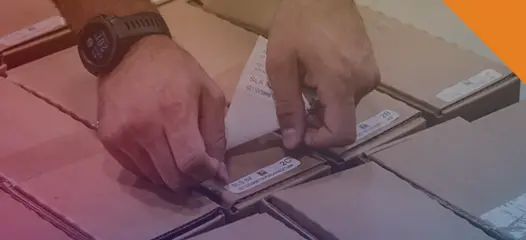What kind of ROI can we expect from an RFID pilot project in our facility?
- 12/2/24 | Asked by Jake A.
The ROI of RFID
Most companies see ROI within 6 to 18 months, depending on the scale, complexity, and area of implementation (inventory, WIP, asset tracking, etc.).
Here’s what drives the ROI:
- Inventory Accuracy: Improves from ~65–75% with manual or barcode methods to over 95–99% with RFID.
- Labor Efficiency: RFID can reduce manual scanning time by up to 90%, freeing up labor hours for higher-value tasks.
- Shrinkage Reduction: Real-time tracking cuts losses from misplaced or stolen items — especially for high-value goods.
- Faster Cycle Counts: RFID allows thousands of items to be scanned in seconds, slashing audit time from days to hours.
- Better Visibility: Enables predictive restocking and reduces stockouts or overstock situations.
Example: A mid-size manufacturer running a 3-month RFID pilot to track raw materials and finished goods reduced lost inventory by 40% and cut labor hours by 30%, leading to an estimated $175K in annual savings on a $60K deployment.
Tip: To maximize ROI, focus your pilot on high-pain, high-impact areas — like missing WIP, mis-shipped pallets, or excessive manual scanning.
Factors That Influence ROI
Several factors influence how quickly you’ll see a return on investment from your RFID pilot. Here’s a breakdown of the key variables that can impact your ROI timeline and effectiveness:
| Factor | Impact |
|---|---|
| Facility Size | Larger warehouses tend to see faster ROI due to scale. |
| Item Volume | The more items tracked, the bigger the time savings. |
| Current Systems | Manual operations benefit most; automated barcoding might see incremental gains. |
| Pain Points | ROI is faster when RFID solves a critical problem like shrinkage, mis-shipments, or labor strain. |
Where to Start
If you’re exploring RFID for your operations, starting with a pilot project is a smart move. It allows you to test the technology in a controlled environment, evaluate vendor capabilities, and gather real data on performance before committing to a full-scale rollout. A well-executed pilot not only minimizes risk but also builds internal buy-in by demonstrating clear wins in accuracy, speed, and efficiency.
An RFID pilot isn’t just about testing technology — it’s about validating a business case. To get the most out of your pilot, start small and focused. Choose a high-impact area, set measurable KPIs, and tag only what truly matters. The right combination of process, technology, and clear goals will ensure your RFID investment delivers meaningful, measurable results — and sets the stage for full-scale deployment.















 RFID Cage
RFID Cage